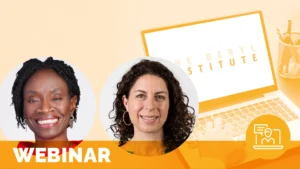Physician Engagement in Patient Experience

By: Triwanna Fisher-Wikoff, MD, FAAFP
Last year, I attended a conference on patient experience. I found myself in a room filled with thought leaders from around the country, all dedicated to enhancing the human experience in healthcare. It was a bit daunting, being one of only two physicians in the room, but I was there not only to represent my organization but also to learn about ways to improve patient experience.
When the question of how to engage providers in the patient experience came up, the responses were disheartening. Comments like “Doctors don’t care about patients,” “They show up in their half-million-dollar cars and gripe all day,” and “They’re constantly whining about the EHR,” felt like both a professional and personal attack. I felt compelled to respond. I raised my hand and said, “First of all, I don’t know any physician who has a half-million-dollar car. My nine-year-old car has 150,000 miles on it, and even our top-grossing ENT physician drives a Prius.” As a family physician and physician leader in a large, independent, physician-owned and -led multi-specialty group, whose main responsibility is patient experience, I’d like to share how to truly engage physicians.
First, never assume that doctors do not care. We went through immense challenges to get to where we are today. While most reading this blog have attended college, imagine adding another four years of medical school, plus another three to seven years of residency, plus another one to two years of fellowship, working 80 to 120 hours a week. When you finally complete your training and start practicing, you’re still waking up at 5 a.m. and maybe getting to bed by 10 p.m. This isn’t just for patient care but also for charting records, patient phone calls, refill requests, filling out paperwork, prior authorizations, hunting down patients attributed to you from unknown sources, and somehow fitting them into your practice within seven days of their hospital discharge—even though your next new patient appointment isn’t for another three weeks.
Doctors endure this because we care about our patients. Charting is necessary to help the patient seeing the oncologist the next day for suspected leukemia, filling out FMLA paperwork for a patient who had a nervous breakdown after being held at gunpoint during a robbery, or obtaining prior authorizations for blood pressure medication to prevent a third heart attack. These are real patients, and any physician would give you the same response. We do this because we care and understand that it’s part of the patient experience. We listen to their needs, connect with them, and partner with them to ensure those needs are met.
Second, stop calling physicians “providers.” Just as Nike’s new campaign states “Winning Isn’t for Everyone,” not everyone can be a physician. Physicians are human beings who take great pride in their training and craft, which is the science and art of healing people. We love the physician-patient relationship, which has been sacred since the time of the Ancient Egyptians. Even in our changing healthcare and political landscape, we are committed to protecting that relationship at all costs. Ask our organized medicine leaders for more details.
Third, doctors hate bureaucracy and are always looking for ways to improve. We belong to a field of study that is constantly advancing, so improvement is a way of life. The best way to engage physicians in the patient experience is to ensure they are part of the decision-making process, not just extensions of non-clinical patient experience leadership. This means finding a physician champion, giving them a paid position with the resources to help your organization succeed in patient experience, and allowing them to continue practicing medicine a few days a week. Physicians are more likely to listen to their colleagues who are facing the same challenges with charting and prior authorizations than to a physician who only sees patients once or twice a month just to maintain the “MD” or “DO” behind their name.
When it comes to the patient experience, physicians operate from a place of deep care for our patients, sometimes to the detriment of our own well-being and our relationships with colleagues, family, friends, and even a higher power (whether we believe or not). The key to fostering physician engagement is to approach it with respect and a bit of compassion.
This brings me to my fourth and final piece of advice: the next time you see a physician who has spent the day providing excellent patient care and ensuring a great patient experience, and is now heading home, likely to continue working, take a moment to look them in the eye and say, “Thank you.”
About the Author
Dr. Triwanna Fisher-Wikoff is a family physician in private practice with Privia Medical Group North Texas since 2013. She has served as Chairperson of their Practice Development Committee since 2017.
Related content
-
 Staff & Provider Engagement
Staff & Provider EngagementStaff and Provider Engagement: The Impact of Connecting with Patients and Families
By Corey Kimpson This is the fifth blog in a series of eight by The Beryl Institute’s Global Patient & Family Advisory Board (GPFAB). The intent of this series is to present our perspective on patients’ and families’ lived experience through each of the strategic lenses of The Beryl Institute’s Experience Framework. The Experience Framework
Learn more -
 Staff & Provider Engagement
Staff & Provider EngagementAwarding Employee Mini Grants for Increased Engagement in Patient Experience
Through grant funds awarded by The Beryl Institute, the Banner Health Patient Experience team designed a PX mini grants program aimed to enhance employee engagement and support the development of innovative ideas to improve patient-reported outcome metrics. These mini grants provided a unique opportunity for teams of healthcare professionals to propose and implement initiatives that
Learn more -
 Culture & Leadership | Policy & Measurement | Staff & Provider Engagement
Culture & Leadership | Policy & Measurement | Staff & Provider EngagementPromoting Anti-Racism and Supporting Staff through Policy
Mount Sinai deepened its commitment to equity and began a journey towards anti-racism in 2020. As part of this effort a diverse group of colleagues responded to a call for action from the staff to create a policy that clearly defines how to manage patients acting in a racist/ discriminatory way while supporting staff as
Learn more
